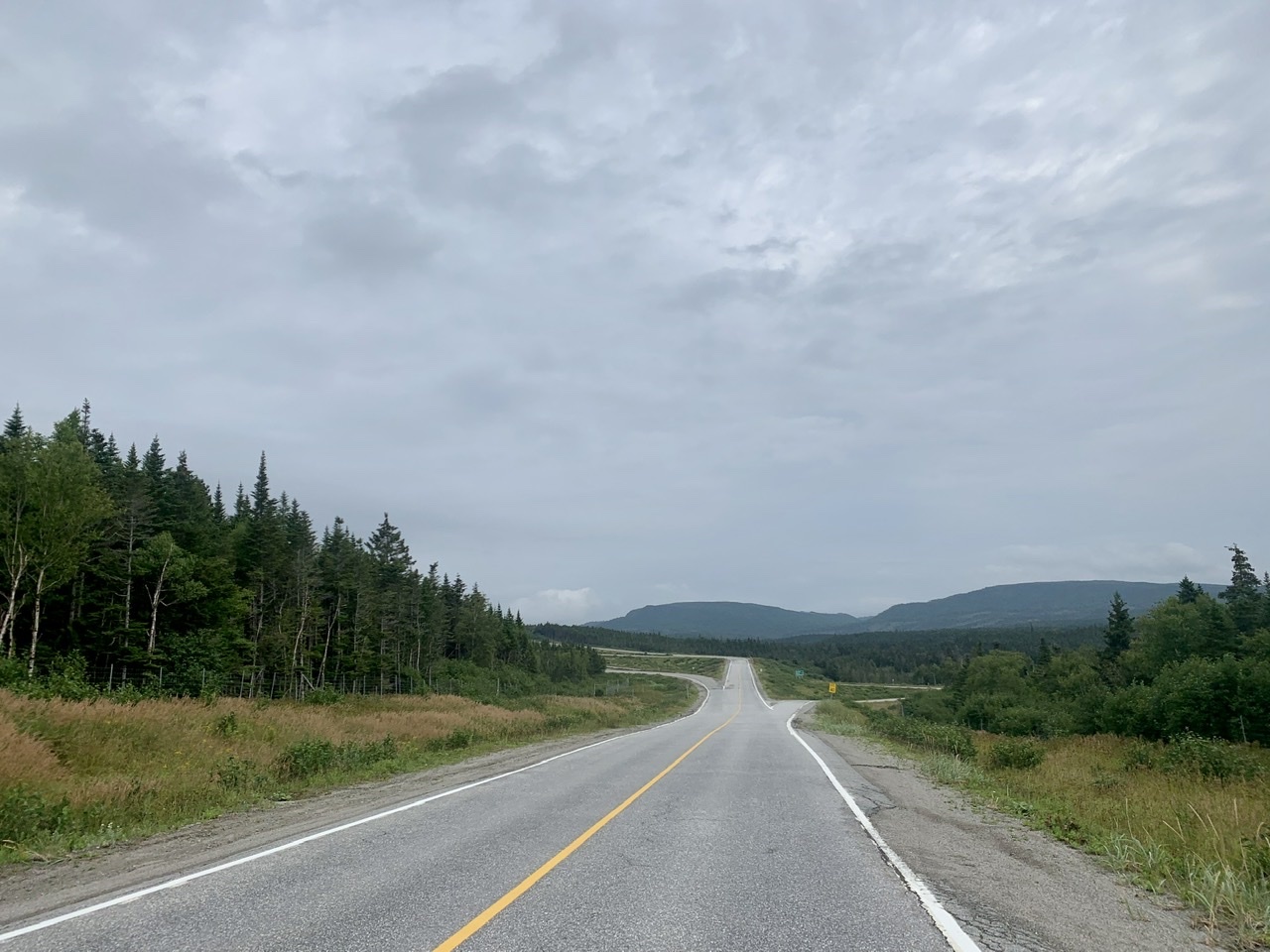
It was overcast as I left. I haven’t seen the sun yet in Newfoundland, and it may be a few days before that happens. Fortunately that means it won’t be hot, so I won’t be needing as much water in these remote areas. I was especially glad for that when I realized I left my water bottles in the fridge this morning. By the time I realized I was an hour from town, and didn’t want to make a two-hour return trip to collect them. Stephensville Crossing was under a boil water advisory, so I’d actually gone to the trouble of boiling water, then cooling it in the fridge for today’s ride. Oh well. At least there’s a bike shop in Corner Brook where I can get replacements.
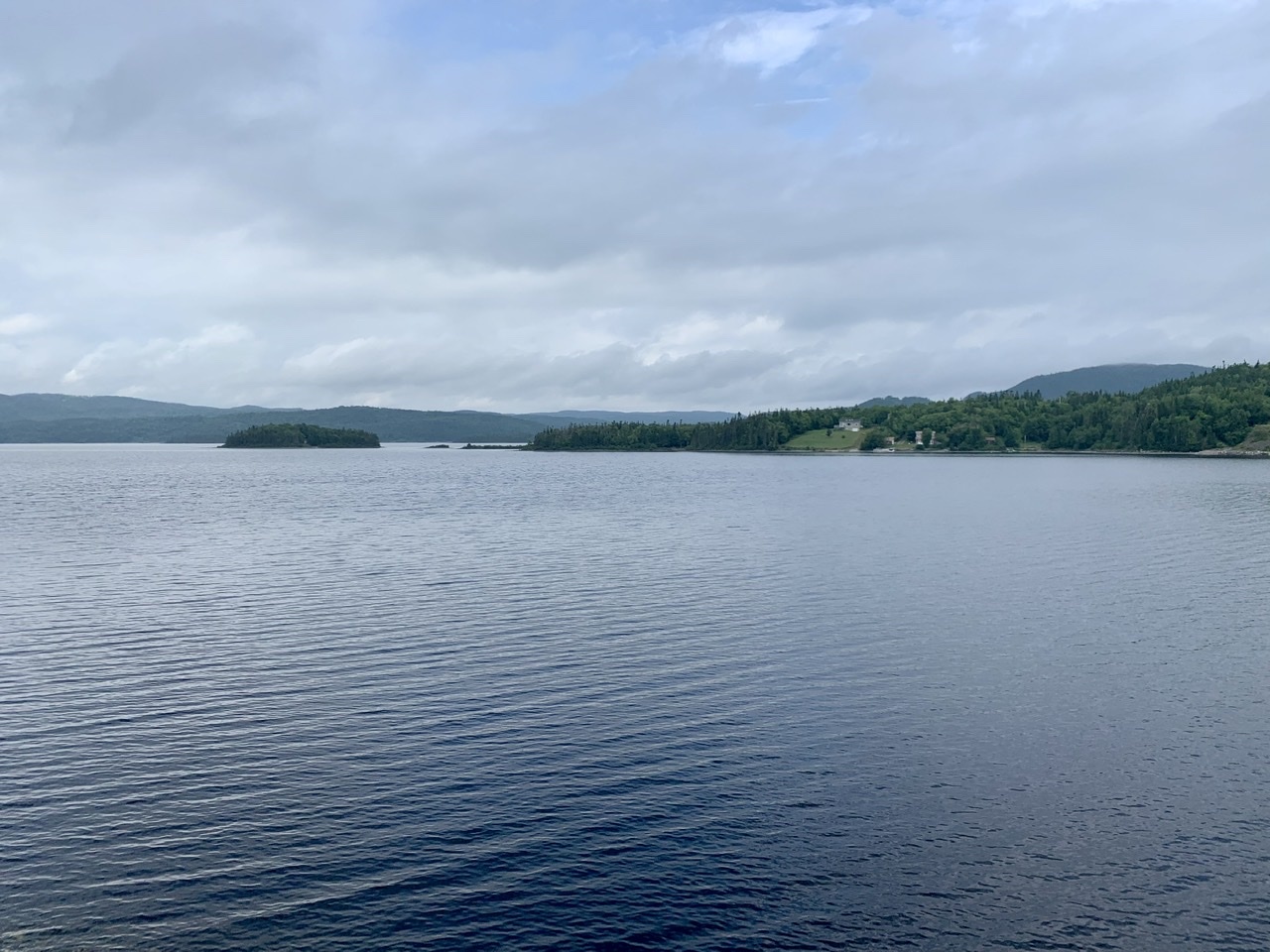
I hadn’t gone swimming in who-knows-how-long, so when I saw Georges Lake I had to fix that. The water temperature was perfect—cool without being cold.

When I got back on the bike I noticed my rear wheel was flat. It took me a while to find the leak, but it was another sidewall-failure-induced blowout. I was out of adhesive tire boots, but was able to find a $5 boot in my wallet (literally a $5 bill). I definitely need to replace that tire in Corner Brook. Oh, and it started to rain while I carried out the repairs, then stopped once I was ready to start riding again. I needn’t have dried myself off after the swim. Or maybe it’s a sign I should have taken a longer swim.
I finally made it to Pinchgut Lake just after lunch, where there was a seasonal convenience store I could get something to drink at. I cleared out their stock of Gatorade, along with a couple ice cream treats. The cashier asked if I wanted a bag, then laughed when I said I was going to have it all right away.
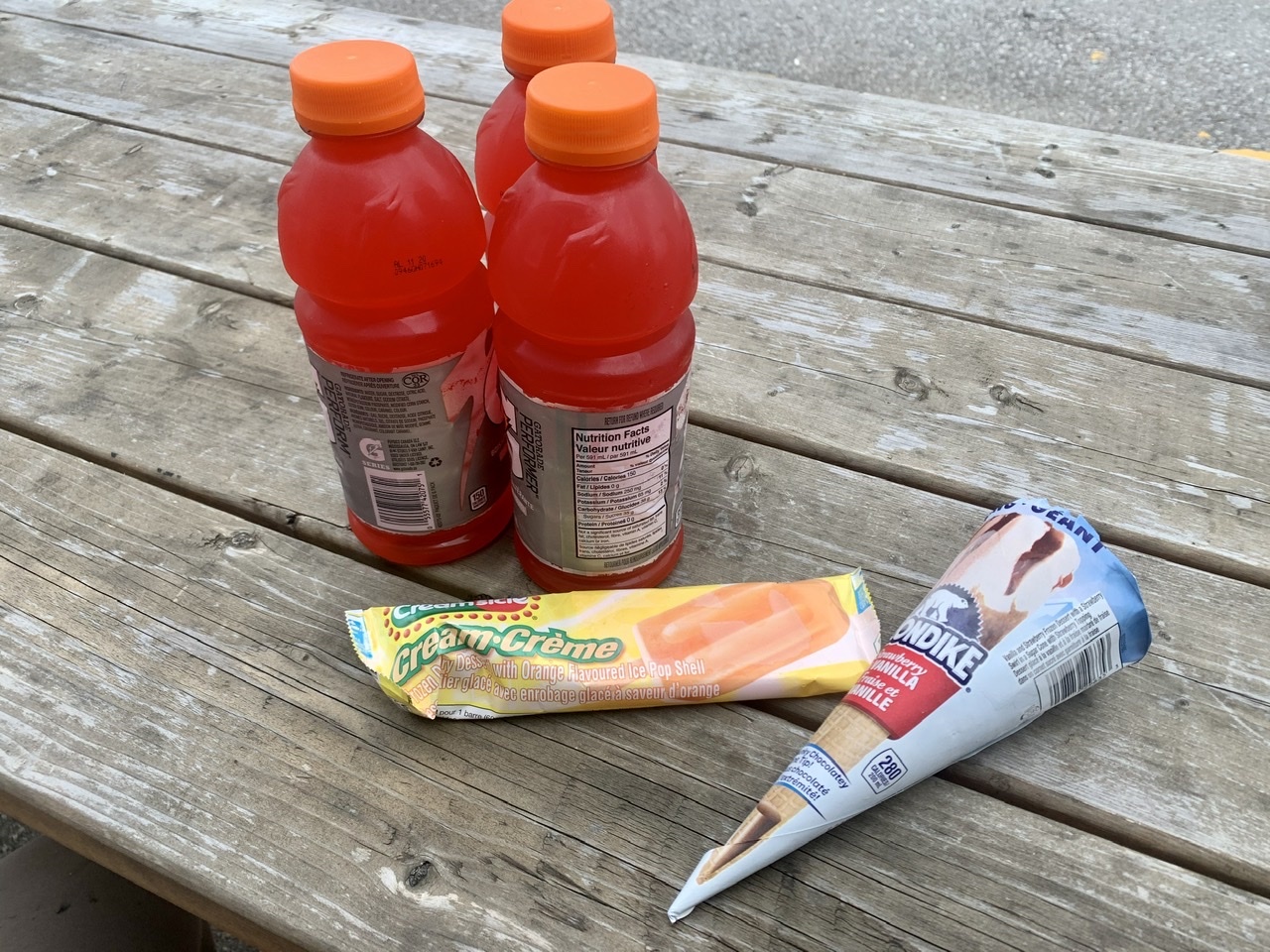
Just as I was finishing the ice cream treats, the clouds opened up, bringing a torrential downpour and a stiff tailwind. I raised my metaphorical sail and started pedalling. It was raining so hard all I could do was laugh as my shoes filled with rain. A pick up truck driver even stop to offer me a lift, which I graciously declinde.T he rain tapered off when I got to Corner Brook about an hour later, and as I descended into town the roads were dry. I managed to go through a very isolated storm.
In Corner Brook I stopped at Cycle Solutions, which was recommended to me by Matthieu at Highland Bike Shop in Antigonish. It’s the last bike shop before St. John’s. I had them check my spoke tension, put on a new tire, and I bought another spare tire, more tubes, and a water bottle. That should get me through to the end. 🤞
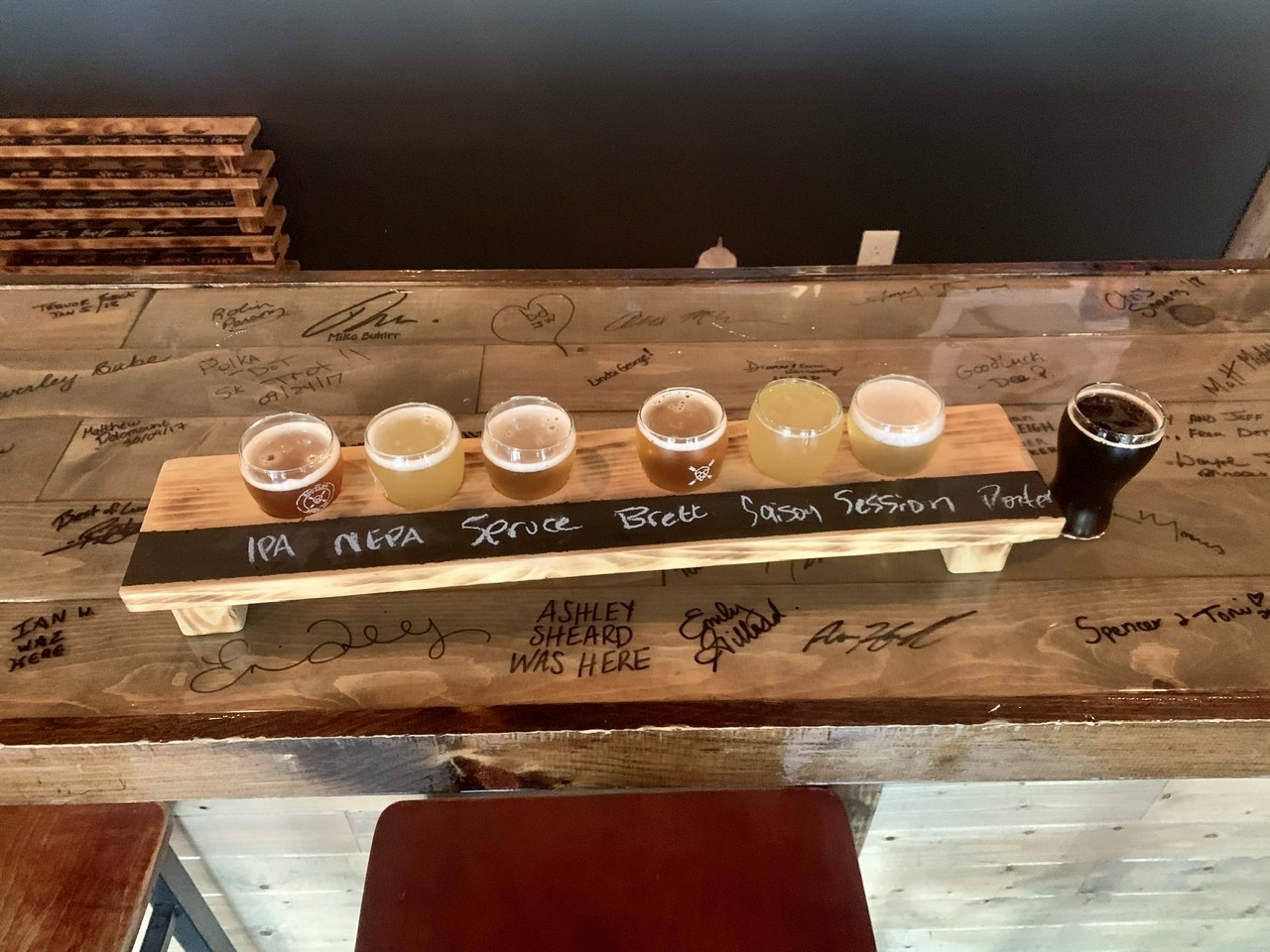
There’s a craft brewery here, so I had a (gigantic) flight after my bike was ready. There were some decent beers, including a brett which uses a different strain of yeast (brettanomyces instead of saccharomyces) than typical beers.
After a stop at the grocery store I headed to the home of Lynne and Victor, parents of Jessie from Halifax. Turns out the lived at the top of a very long and steep hill. Getting to their place was the toughest climb of the trip so far. Lynne came out to greet me. They treated me to a giant dinner of corn, chicken, and salad, then took me for a tour of Corner Brook. They only moved here from Nova Scotia a year ago, so they still have an outsider’s sense of wonder about the place.
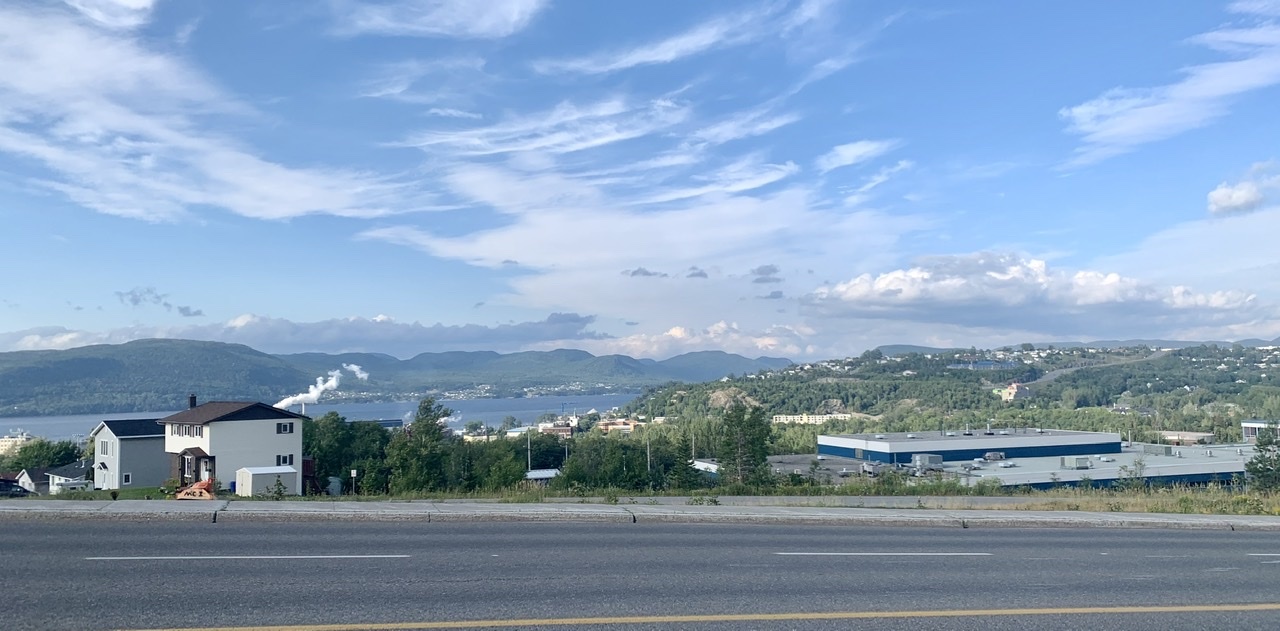
We stopped at the Captain James Cook national historic site, where there are incredible panoramic views of Corner Brook and the Bay of Islands. Then the drove me around town to figure out the best (least steep climb) way to get to the highway in the morning, letting us compare different routes for grade and distance.


When we got back to the house Lynne emptied out her cupboards while I ate ice cream, offering me lots of food and treats to take with me. I won’t have to visit a grocery store for a few days. They’ve been amazing hosts.


Today’s distance: 80 km
Cumulative Distance: 7787 km


My Bicycle
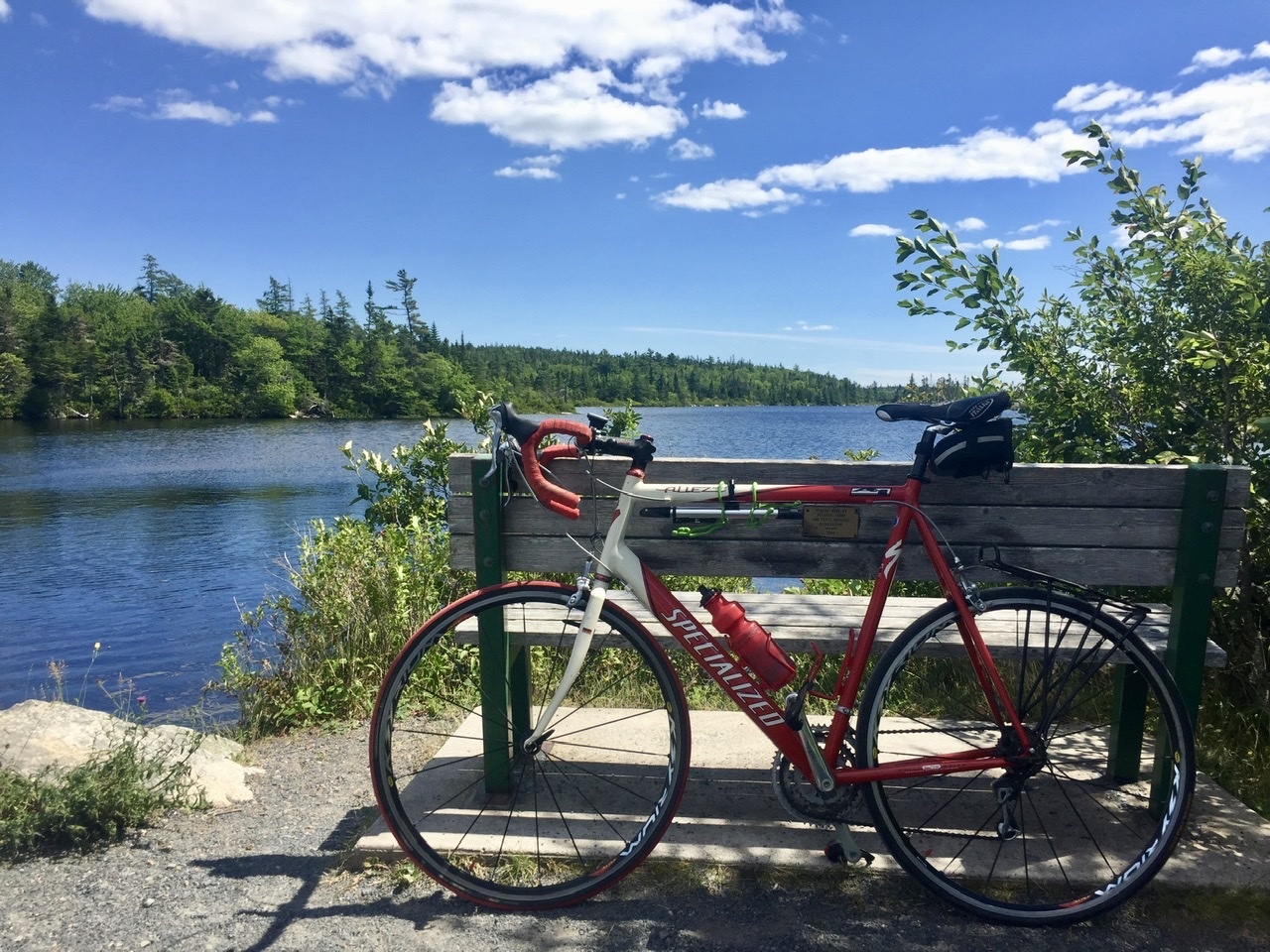
WARNING: Inside-baseball bicycle talk follows. If you’re curious about the bicycle I’m riding, read on. If this type of talk bores you to tears, then I won’t be offended if you stop reading here.
I’ve wanted to bike across Canada for a long time. I also wanted a road bike for many years but never felt I could afford a proper one. When I got into long-distance riding in my early twenties all I had was a mountain bike since that was the dominant style sold in bike shops at the time. Road bikes were out of my price range then—the cheapest model you could get at the time was over $1000, and as an underpaid student I couldn’t justify it. (I even “competed” in a duathlon on my mountain bike—the climbing gearing came in handy as I rode past all the double-chainring road bikes walking up the Niagara Escarpment). So I decided to build my own bike. It would let me pay for little bits at a time, and I’d learn a lot about bikes in the process, though the latter benefit I realized in hindsight.
So I started with a frame I bought off eBay. At the time I watched a lot of Tour du France coverage so I picked out a racing bike frame. I figured when I would bike across Canada I’d do it with Tour du Canada where there’d be a support vehicle to carry my gear for me. I bought a Specialized Allez Sport frame because it had mounts for a rack so I could carry what I needed for the day, and for reasons I still don’t understand I was obsessed with the Specialized brand. It was red, because red is best.
Over the next year-and-a-half I bought all the components I needed bit-by-bit. I would meticulously research the options, then order one piece at a time. I wouldn’t buy the most expensive or the cheapest, instead looking for getting the best bang for my buck (e.g. buying Ultegra but not Dura-Ace). I had to learn about bottom bracket widths and threading, derailleur cage length, handlebar diameter, and all sorts of other minutia that you avoid by buying a bike off the shelf. All that knowledge has come in handy in the years since. I can have educated conversations with bike shop mechanics and salespeople. I can also take care of nearly all repairs myself, and I know what skills are above my paygrade (or patience).
So I built myself a very nice racing bicycle. But as I prepared for this ride I realized I wanted to ride solo instead of with a group so I could have more flexibility to visit the people and places I chose. That meant I needed to carry all the gear myself, and a racing bike isn’t suited for that. For financial and sentimental reasons I still wanted to take that bike I’d built, and that meant modifications were in order, some of them inadvisable for a trip as long as mine. The frame had short chainstays which meant there isn’t a lot of heel clearance once you put panniers on. It was never intended to have fenders and wide tires. It wasn’t really intended to have a heavy-duty rack on it. I was still determined.
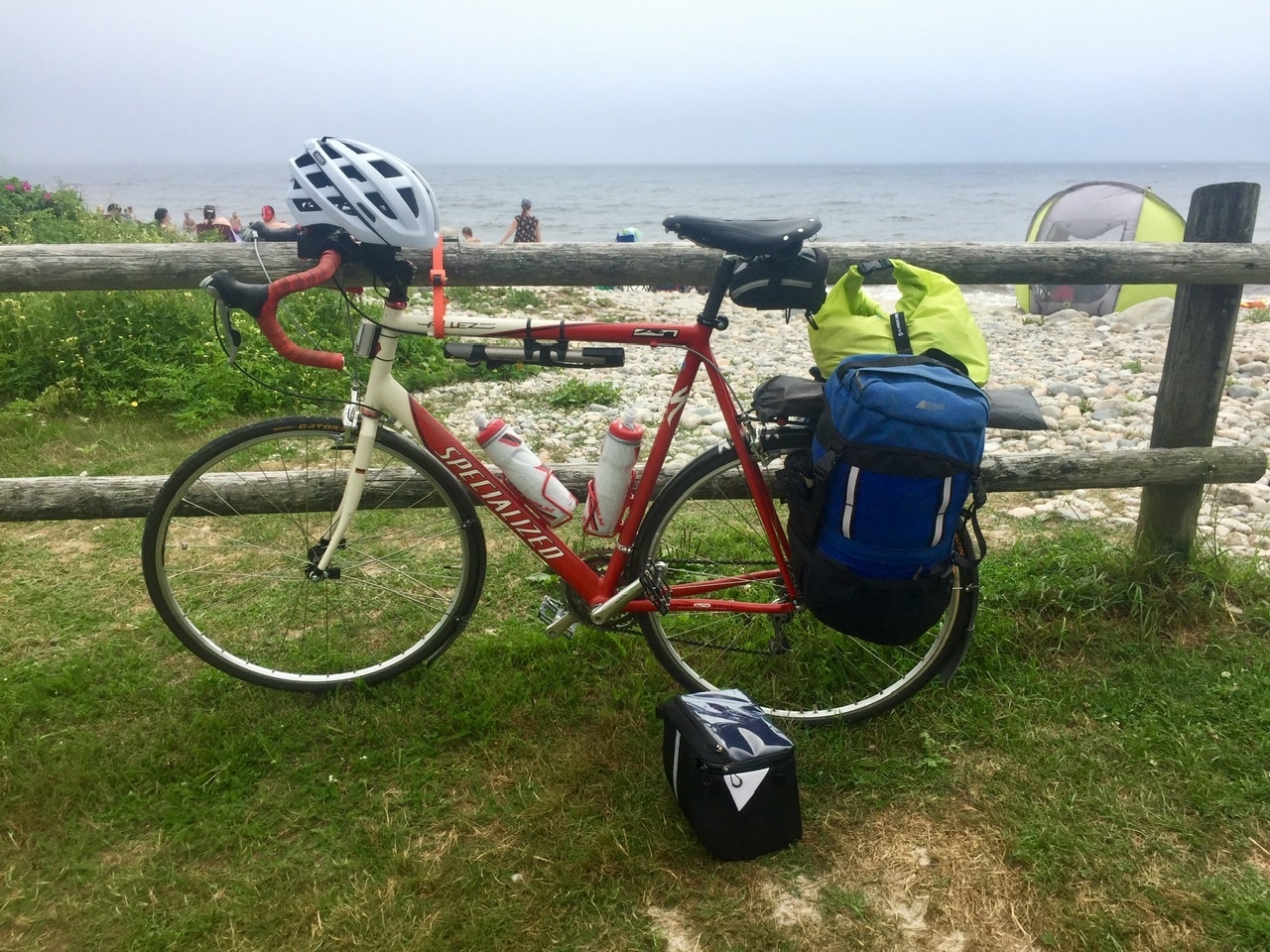
I brought home a selection of tire widths to determine the fattest tires I could put on it. 700x28 was the limit, even though many bicycle tourists won’t ride with anything smaller than 700x32. I had to cut my fenders in pieces since they wouldn’t fit under the crown. I flipped my stem so it would have an upward angle instead of downward, giving me a more upright riding position. I had new wheels built to replace the racing wheels I had on (which would be impossible to repair since replacement spokes have been discontinued by the manufacturer). I picked out a rack that would shift the panniers backwards, giving more heel clearance but making it more wobbly as the weight was shifted up and back. I replaced my racing pedals (“designed” by Laurent Jalabert, my favourite racer at the time) with flats so I wouldn’t have to bring an extra pair of shoes. I put on a big handlebar bag so I’d have easy access to snacks and other gear at the expense of handling (this was the best thing I did).
All those things I changed made the bike better for touring, but the addition of fenders and wider tires meant I very fine tolerances for wheel trueness. If my wheels were no longer true the tire would rub against the fenders or frame, which has definitely been an issue this past week. But I wanted to ride this bike across Canada, and I was determined to do it, so I accepted the risks involved.
I also spent an incredible amount of time and money getting my gear to be as small and light as possible, as I didn’t want to carry any more weight than necessary. I’ll expand on that in a later post, but all that effort has really paid off.